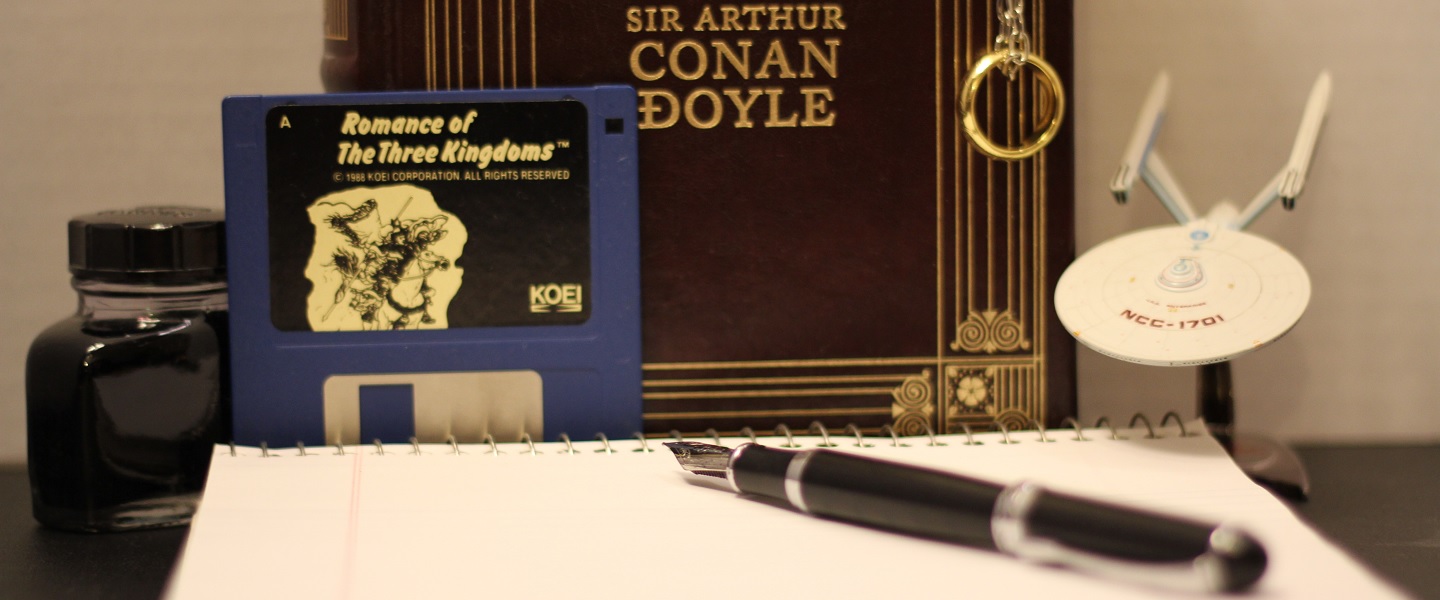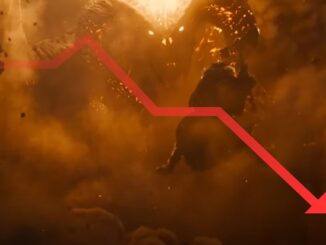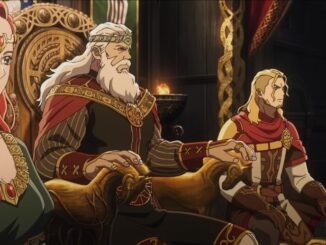
When it comes to screen adaptations of J.R.R. Tolkien’s work, there is an almost-unanimous consensus that Peter Jackson’s The Lord of the Rings movies are the best and the benchmark to meet and surpass right now. Unfortunately, later adaptations have failed to reach the benchmark set, including Peter Jackson’s The Hobbit movies. But just like there has to be a best, there also has to be a worst when it comes to adaptations. Right now, that would be The Rings of Power according to an overwhelming majority of Tolkien fans. So, comparing the worst Jackson movie adaptation to the overall worst Tolkien adaptation, here are the Top 11 Things Peter Jackson’s The Hobbit movies did better than Amazon’s The Lord of the Rings: The Rings of Power TV series in no particular order.
1: Character Development and Emotional Depth
The Hobbit trilogy, despite its flaws, did a good job fleshing out its characters, particularly the dwarves. When it comes to the book, characterization and dialogue were both limited to a point which doesn’t translate well to cinema. So the films expanding on each dwarf’s personality, making them memorable, relatable, and individuals was a good effort overall.
Compare that with The Rings of Power, where many characters feel underdeveloped, are not properly utilized, and leaves most of the audience disconnected from the various characters and their journeys, such as Bronwyn for example. Or, even worse, established characters are written completely out-of-character to their book counterparts such as Galadriel.
2: Epic Battles and Fight Scenes
The Battle of the Five Armies in The Hobbit trilogy may have been over-the-top for some, but it delivered in terms of scale and excitement for the buildup in the movies. The choreography, stakes, and sheer spectacle were unmatched by anything in The Rings of Power’s first season which didn’t reach the same level of cinematic grandeur or epic scale that the show promoted.
The same for smaller scale fighting in which The Hobbit movies had more enjoyable fights than The Rings of Power where fight choreography was inconsistent ranging from decent to poor.
Considering that The Hobbit movies had a budget of around $700 million, while The Rings of Power is said to have cost around $1 billion overall, it appears that The Hobbit movies was able to properly budget it’s finances to include good fight choreography and battles.
3: Faithful Adaptation of Source Material
Despite its expansions and creative liberties, The Hobbit trilogy generally stayed closer to Tolkien’s narrative and themes than The Rings of Power has. While the movies felt long-in-the-tooth for some, it can’t be said that the new material greatly strayed from the source material. Whereas The Rings of Power has invented and altered almost all of Tolkien’s lore; even going so far as to create new lore for things that didn’t need it such as mithril.
Adherence to the source material made The Hobbit trilogy more palatable to Tolkien fans, despite its flaws. In fact, one could argue that Tolkien fans would have a far easier time listing all of the non-canonical things in The Hobbit than Faulkiens, faux Tolkien fans, would have trying to list The Rings of Power’s instances of adhering to canon.
4: Integrated Humor
Humor in The Hobbit trilogy was another mixed bag that was able to be implemented without undermining the story’s gravitas. Characters like Bilbo, the dwarves, and even Gandalf provided moments of levity that made the films more enjoyable, especially for younger audiences which The Hobbit book was written for. However, there were some sour notes such as the portrayal of Radagast, both his outward appearance and personality, and Bombur’s fight scene from inside of a barrel, that failed to be humorous or was over-the-top even for a fantasy setting.
On the other hand, one of the main criticisms of Peter Jackson’s elves is that they were all too stiff when, especially in Tolkien’s The Hobbit, many are portrayed as carefree and jovial. In fact, they sing a whole song about Bilbo and the Dwarves as the company reaches Rivendell which wasn’t in the movies (much to our disappointment but included in the old animated film).
The Rings of Power, on the other hand, takes a far more serious tone which, while appropriate for certain aspects, sometimes made it feel overly dour, less accessible, and ponderously boring. So, whenever humor was injected into it, tended to be the equivalent of a fifth-grader’s ability to create a joke such as, for example, Durin IV yelling “Give me the meat, and give it to me raw!”

5: Villain Presence
Azog and Bolg, while not originally major characters in Tolkien’s The Hobbit, were elevated to the position of key antagonists in the trilogy. In the case of Azog, this broke canon since he died in Moria at the hands of Dain Ironfoot. However, this provided the films with a consistent and menacing villain presence, even providing more personal stakes for the pursuit, as the dwarves are being hunted while they make their way to the Lonely Mountain. Not only did this help maintain tension and provide a clear adversary for the heroes to confront, it made the stakes more personal for Thorin himself and fleshing out his character even more. All the while, Tolkien fans were also reminded that Sauron was working in the background, which the movies were able to show in regards to Dol Guldur and The Necromancer story arc.
For The Rings of Power, it heavily relies on Sauron as a looming threat but struggles to establish him as a compelling, consistent villain early on, or provide any other villain to properly fill that role, which has diluted the sense of danger. In fact, the writing for Sauron’s character is comically and criminally underwhelming in the show, compared to how he is described in the books, while a character such as Adar and his “white orcs” feel out of place and obviously non-canonical for a number of reasons.
6: Pacing and Structure
Although criticized for being stretched into three films, the structure of The Hobbit trilogy allowed for the gradual build-up of tension and character development. Though, as with The Lord of the Rings trilogy, the amount of time spent on these adventures is greatly diminished as compared to the books.
In contrast, The Rings of Power feels rushed in its need to cover extensive ground, leading to uneven pacing and a disjointed narrative. In fact, the condensed timeline results in disjointed versions of events resulting in a major disconnect for Tolkien fans while a hindrance and confusion for the general audience. Because of this, there are some arcs which could have been left out that would have improved the show’s pacing.
7: Nostalgia and Fan Service
It doesn’t seem fair to compare Peter Jackson’s Hobbit films with Amazon’s The Rings of Power when it comes to nostalgia and fan service. After all, The Hobbit is a prequel to The Lord of the Rings and it is easy to play on nostalgia and fan service. Naturally, the films were filled with callbacks to The Lord of the Rings trilogy – from seeing beloved characters, such as Gandalf, to familiar musical cues, and referencing future The Lord of the Rings characters such as Gimli and Aragorn.
While The Rings of Power attempted similar fan service, such as the horrific Harfoots to shoehorn hobbits into the Second Age, such attempts are understandably constrained by its place in the timeline. But, for the characters that are useable to lure in Tolkien fans and the general audience because of their familiarity with characters such as Galadriel, Elrond, Tom Bombadil, and Barrow-wights, the shows portrayal of them is jarring due to its poor writing and to the series trying to forge its own distinct identity which undermines the impact of such moments.
8: Visual Continuity with The Lord of the Rings
Jackson’s Hobbit trilogy was able to maintain a consistent visual aesthetic with The Lord of the Rings, creating a seamless Middle-earth experience. The set designs, costumes, and even the color palette were reminiscent of the original trilogy; providing a nostalgic and coherent experience for fans. Again, one has to point out that there wasn’t a large span of time between The Hobbit and The Lord of the Rings, which made it important for the The Hobbit movies to maintain that visual continuity for, at the very least, the sake of the general audience.
On the other hand, The Rings of Power opted for a different visual style for the various races which doesn’t feel like the same Middle-earth, leading to a sense of dissonance for long-time fans. While the argument can be made that the Second age takes place well before The Hobbit and with a span of 3,441 years, the fact that there is no real connection between the styles of the Numenoreans and elven armor, for example, with the elves in LOTR and the men of Gondor, fails to help fans connect with these depictions. Not to mention that clothing and armor styles are not great or indicative of the ever-promoted bloated budget of the show.
Whereas, despite its red flags, The Lord of the Rings: The War of the Rohirrim, which is set almost 200 years before The Hobbit, does a great job of showing visual continuity with the Peter Jackson movies in the architecture, clothing, and armor.
9: Cinematic Experience
Despite the criticism over the use of CGI, The Hobbit films provided a theatrical experience that was visually stunning and immersive, especially in their portrayal of iconic locations like Rivendell, Erebor, and Smaug’s lair. The Rings of Power, though visually impressive itself at times, reminded audiences of its small-screen format, making certain scenes feel less epic in comparison, despite how much it was promoted by the showrunners as being epic on a grand scale.
While it is normally unfair to compare movies and tv shows, the boasting by writers of The Rings of Power over how great and grandiose their show was going to be, in tandem with the show’s budget, makes the comparison an acceptable one.
10: Elven Portrayals
Jackson’s The Hobbit trilogy arguably portrayed elves better, particularly in terms of visual continuity with The Lord of the Rings and maintaining their ethereal, almost aloof nature. Despite the valid criticism that elves were too prominent in the movies, the elves in The Hobbit felt more in line with Tolkien’s original vision, with their wisdom, grace, and occasional arrogance well represented. However, absent in them was the jovial and carefree attitudes described in the books.
Meanwhile, The Rings of Power took creative liberties to a great extent, which resulted in a broader and more modernized portrayal which failed to capture the timeless, otherworldly essence that Tolkien imbued in his elven characters. Rather, it put their version of elves at odds with what Tolkien created while also eschewing his themes and motivations for the race.
A prime example of this was the show’s manufactured crisis of a “sickness/decaying” affecting the elves and their land which is used as a crutch to incentivize them to create the rings of power.
However, one also has to compare, not just the personality, but the physical looks of the elves between both properties. Physically, the actors hired for The Hobbit movies fit the physical ideas of Tolkien’s elves. Which follows Peter Jackson’s prerequisites when he was working on The Lord of the Rings movies.
For The Rings of Power, the actors hired to play elven characters such as Galadriel, Elrond, and Celebrimbor fall short of the standards of what elves should physically look like. Overall, there are very few hirings that actually look like Tolkien elves. Which becomes obvious when compared to the movies’ elven portrayal and is off putting for Tolkien fans and the general audience.
11: Romance
Yes, Tauriel’s three-way romance was the worst part of The Hobbit movies. However, it technically didn’t break canon since the fostering romance between her and Kili never really went anywhere. Despite this canon-breaking-romance-in-the-making arc, the scenes between Kili and Tauriel were endearing and even plausible thanks to, not just the writing, but the actors themselves due to their charisma and personalities. But the real Balrog in this farcical romance was turning Legolas into a little beta simp following Tauriel around and mooning after her.
Romances in The Rings of Power haven’t been great. Galadriel and Sauron, on the other hand, openly spit on Tolkien’s writing about these characters and what Amazon has done is absolutely galling with how promotions for The Rings of Power season 2 is doubling down on this “shipping.” A romance that only sycophants, clout chasers, and fake fans cheer for. Then there is the other non-canonical romance between Arondir and Bronwyn which also goes against canon since, at that time, there had only been a number of elf/human romances which the show itself mentions while still deigning to ignore the canon.
Even if that weren’t the case, the romance between Arondir and Bronwyn is sorely lacking in subtlety and depth to make the general audience care, let alone cheer, for these two characters.
Bonus: Branding
Peter Jackson’s record-breaking success with The Lord of the Rings trilogy pushed Tolkien’s work into the corporate limelight. Before, it was difficult to convince corporations to get on board with adapting Tolkien’s work as a video game, let alone as a movie. But that changed when Jackson’s trilogy showed the money-making potential of The Lord of the Rings.
For The Hobbit movies, it utilized The Lord of the Rings brand as a way of promotion as the prequel to the trilogy without having to include it in the movie titles. However, corporations fixated on The Lord of the Rings brand have relied on it to sell further adaptations as a way to lure Tolkien fans and general audiences into watch adaptations that are not faithful to Tolkien’s work.
Amazon’s show heavily relied on The Lord of the Rings brand to sell its series even though the Second Age, which The Rings of Power is set in, takes place before LOTR by thousands of years. Amazon made The Lord of the Rings the focus rather than The Rings of Power to sell its show.
A pattern we are seeing being established to sell future projects that go against Tolkien’s vision such as upcoming projects like The Lord of the Rings: The War of the Rohirrim or The Lord of the Rings: The Hunt for Gollum.
Conclusion
Despite the disappointment for Peter Jackson’s Hobbit movies, when compared to Amazon’s The Lord of the Rings: The Rings of Power show, those movies are a far superior viewing experience than the show for both fans of Tolkien and general audiences. The writing, visuals, characters, and music result in an experience that is still enjoyable and fun, resulting in a $2.9 billion payout at the box office.
For The Rings of Power, those same elements provided an experience that is ponderous, boring, and unenjoyable for the majority. The result? A 37% retention rate of viewers for a show that has no merchandise and a lackluster reception for Season 2.
But what do you think The Hobbit movies did better than The Rings of Power?
Author’s Note: Support this site by donating via Paypal or even checking out our merchandise on RedBubble where you can find designs that cater to writers and readers. Money donated and raised goes into paying for this website and equipment.






[…] In the movies, romance in Peter Jackson’s The Lord of the Rings was more prominent for Aragorn and Arwen while Faramir and Eowyn’s relationship was sacrificed. Then Peter Jackson decided there needed to be a love story in The Hobbit movies by creating a non-canonical romance between Kili and the non-canonical character Tauriel. Say what you want about it, but at least their romance in The Hobbit movies was more believable and endearing than the ones in The Rings of Power. […]
[…] them. However, The Rings of Power is plagued with a plethora of issues. From its poor writing, to miscasting of characters, to ignoring J.R.R. Tolkien’s canon, and more, one would think that the show could at least get […]
[…] But the biggest blow to the IP was Amazon’s The Lord of the Rings: The Rings of Power series. Despite its $1 billion budget, The Rings of Power’s poor writing, non-canonical take on Tolkien’s work, disrespect of Tolkien himself, and out-of-character portrayals of Lord of the Rings characters resulted in backlash from the majority of Tolkien fans and a growing disinterest from general audiences. The Rings of Power has been so poorly done that it even made The Hobbit movies look better in comparison. […]